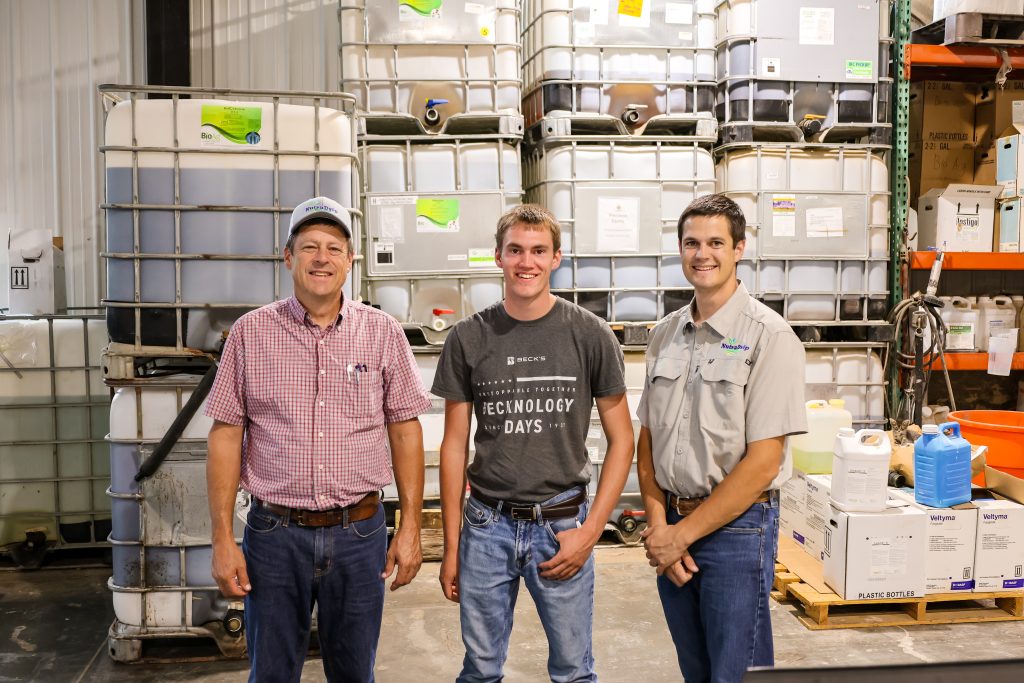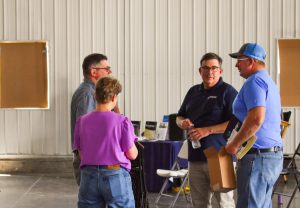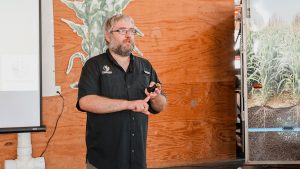
From a Family Farm to a Fifth-Generation Innovation
At Rokey Farms near Sabetha, Kansas, farming runs deep. Todd Rokey represents the fifth generation to work the same quarter section of land where his great-grandfather once farmed. Today, the operation grows corn and soybeans, raises hogs, and is pioneering how farmers can reuse manure as a liquid fertilizer through subsurface drip irrigation (SDI).
When the family looked to add irrigation about five years ago, land expansion wasn’t an option. “It was difficult and still is difficult to get more land,” Todd explains. “So, we needed to increase the value of our acres another way.”
They considered pivots—but Todd’s son, Travis, pushed them to explore subsurface drip irrigation. That decision became the foundation for one of the farm’s biggest breakthroughs yet: running hog manure effluent directly through the drip system.
How Rokey Farms Built Their SDI-E System
The Rokeys installed 127 acres of SDI, feeding both corn and soybean fields. One year later, NutraDrip CEO Kurt Grimm suggested that Todd could run hog manure effluent through the same irrigation network.
“At first, I didn’t think it would work,” Todd admits. “But Kurt said Netafim was developing the filtration to make it possible.”
They ran a 3-inch PVC pipeline a mile from their hog lagoon to the irrigation filters. The first year, the line was temporary—just laid along the corn rows. When it proved successful, the family buried it permanently, creating a fully integrated manure-to-drip system.
To manage solids, Todd added a rotating river screen at the lagoon’s second stage. This pre-filters the effluent before it reaches the irrigation filters, allowing for smooth, clog-free pumping and consistent nutrient delivery.
Nutrient Recycling That Pays for Itself
The economic advantage quickly became clear.
“Hiring someone with a drag hose to pump the lagoon would cost me at least a penny to a penny and a half per gallon,” Todd explains.
“By using the system that’s already in place, I can apply nutrients through drip anytime—even while I’m sleeping.”
The Rokeys’ system delivers nitrogen, potassium, and micronutrients directly to the crop’s root zone—reusing nutrients that would otherwise require costly disposal or hauling. While phosphorus stays tied up in solids, the liquid fraction provides a steady, low-cost nutrient source that complements traditional fertilizer applications.
Yields That Prove the Value
Before irrigation, Rokey Farms averaged:
- 150–160 bu/acre corn
- 50–55 bu/acre soybeans
After installing SDI, yields jumped to:
- 230–240 bu/acre corn
- 70+ bu/acre soybeans
That’s a 40–60% yield increase driven by uniform moisture and precise water delivery.
When paired with effluent, the system not only boosts productivity but closes the loop on waste, turning a by-product into an asset.
Smart, Connected, and User-Friendly
Todd controls the system through a GrowSphere controller—right from his phone. “Anything I can do on that controller, I can do on my phone anywhere I have service,” he says.
This includes scheduling irrigation zones, managing manure applications, and injecting additional nutrients like sulfur or nitrogen as needed.
The farm also uses soil moisture probes and oxygen sensors to monitor crop and soil health through IrriWatch software. “It’s easy to see exactly when to start irrigation and how fast the crop is using water,” Todd says.
“It takes management, but the system is very automated. You just have to use the tools.”
Working With NutraDrip
Todd credits NutraDrip for both technical and agronomic support.
“They’re very accessible and easy to work with,” he says. “They come out at the end of the season to winterize the system and help troubleshoot any issues.”
NutraDrip’s agronomy team also assists with tissue and sap sampling, nutrient planning, and in-season adjustments. “That agronomy support has been one of the most beneficial parts for us,” Todd adds.
The Future of Efficient Farming
Looking ahead, Todd is optimistic.
“There’s always something new to learn. We’re figuring out better ways to pump manure, use oxygen sensors, and apply nutrients more efficiently. The next generation—like my son Luke—will take it even further.”
For Todd, drip irrigation with manure is about making every acre count.
“With SDI, the water goes straight to the roots—no evaporation, no waste. It’s the most efficient way to irrigate, especially when you’re working with limited water.”
Why More Farmers Are Turning to SDI-E
- Turns waste into value — applies manure nutrients directly to the crop
- Reduces water loss — underground application eliminates evaporation
- Increases yield — consistent moisture drives higher productivity
- Cuts hauling and pumping costs — uses existing infrastructure
- Improves sustainability — reuses nutrients and conserves resources
Ready to Learn More?
NutraDrip partners with farms across the Midwest to design, install, and maintain subsurface drip irrigation with effluent (SDI-E) systems.
If you’d like to see a system in action or schedule a manure demo near you, contact the NutraDrip team today.




